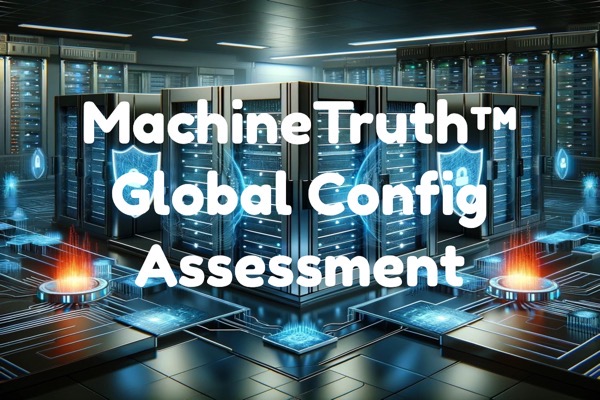What is a Virtual CISO (vCISO)
A Virtual Chief Information Security Officer (vCISO) is an outsourced cybersecurity professional who provides strategic security leadership and guidance to organizations. This role is filled by an experienced individual who brings a deep understanding of cybersecurity best practices, compliance regulations, and risk management strategies. The vCISO works with the organization to develop and implement security policies, assess and mitigate security risks, and provide ongoing support and expertise to ensure the organization’s data and systems are adequately protected. This arrangement allows organizations to access high-level cybersecurity expertise without the cost of hiring a full-time CISO, making it a cost-effective and efficient solution for businesses of all sizes. The vCISO also offers flexibility, allowing organizations to scale their security needs as they grow and evolve. Overall, a vCISO provides the critical security leadership and expertise necessary to protect an organization’s digital assets and reputation in today’s complex threat landscape.
Benefits of Hiring a vCISO
Hiring a vCISO brings numerous benefits to a company’s cybersecurity strategy. They offer expertise in cybersecurity, bringing a deep understanding of best practices and the latest threats. Their flexibility allows them to adapt to the company’s specific needs, scaling their services as required. This makes them a cost-effective solution compared to hiring a full-time CISO.
vCISOs also bring increased focus on security, as their sole responsibility is to ensure the company’s protection from cyber threats. Additionally, their wide perspective gained from working with different businesses allows them to bring valuable insights and innovative solutions to the table. Overall, hiring a vCISO provides companies with the specialized cybersecurity expertise needed to navigate the complex and ever-changing threat landscape, while also being a cost-effective, flexible, and focused solution.
Potential Risks & Threats
As a technical manager, it’s important to understand and address potential risks and threats in order to maintain the security and integrity of our technology systems. By identifying and mitigating these potential issues, we can proactively protect our organization from potential harm and maintain the functionality of our systems.
In today’s rapidly evolving technological landscape, potential risks and threats are constantly emerging. These can include cybersecurity threats such as hacking, phishing, and malware attacks, as well as physical risks such as natural disasters and power outages. Additionally, risks related to data loss, system failures, and unauthorized access must also be taken into consideration. It’s imperative for technical managers to stay vigilant and implement strong security measures to protect against these potential risks and threats. Regular risk assessments, robust security protocols, and a strong incident response plan are essential components in maintaining the resilience and security of our technology systems.
Traditional Security Posture
Traditional security posture in financial institutions is facing significant challenges in protecting client data and finances. With the increasing sophistication of cyber threats, data security has become a critical concern. Financial institutions need to prioritize risk management and mitigation efforts to effectively address these challenges. This requires an individual to oversee these efforts and create a robust security strategy that can adapt to evolving threats..
Understanding Potential Threats and Risks
Businesses face potential threats and risks in terms of cybersecurity attacks, including the hidden risks of lacking internal accountability and the involvement of internal actors in data breaches. A vCISO, backed by a hands-on team, can help in identifying and mitigating potential threats before they become major incidents. The vCISO will assess vulnerabilities and potential risks in the organization’s IT infrastructure and data, including insider threats, phishing attacks, and inadequate security protocols. They will also introduce a risk management strategy to prevent cybersecurity incidents from occurring, such as implementing robust access controls, regular security audits, and employee training. By proactively addressing potential threats and risks, businesses can strengthen their cybersecurity defenses and protect sensitive information from unauthorized access or exploitation.
Limited Resources for Cybersecurity Programs
Small-to-medium-sized businesses (SMBs) often face challenges and limitations when it comes to implementing cybersecurity programs due to their limited resources. These limitations include budget constraints, lack of dedicated IT staff, and limited access to advanced security technologies. As a result, SMBs are often unable to invest in complex and comprehensive cybersecurity solutions.
It is crucial to understand the unique cybersecurity needs of SMBs and develop tailored cybersecurity plans to address these limitations. A one-size-fits-all approach is not suitable for SMBs, as their resources and capabilities are different from larger enterprises. A tailored cybersecurity plan for SMBs should focus on cost-effective solutions, employee training, and leveraging managed security services to augment their internal capabilities.
Understanding the challenges and limitations faced by SMBs in implementing cybersecurity programs is essential for developing effective and realistic security strategies that meet their specific needs and limitations. By addressing these unique challenges, SMBs can enhance their cybersecurity posture without overburdening their resources.
Establishing a Cybersecurity Program & Strategy
Introduction: Establishing a strong cybersecurity program and strategy is essential for protecting the organization’s sensitive information and assets from emerging cyber threats. This involves implementing comprehensive security measures and protocols to safeguard against potential attacks and mitigating risks to the business.
When establishing a cybersecurity program and strategy, it is crucial to begin with a thorough assessment of the organization’s current security posture. This involves identifying vulnerabilities, understanding potential threat vectors, and evaluating existing security controls to determine areas of improvement.
Once the assessment is completed, the next step is to define a clear cybersecurity strategy that aligns with the organization’s goals and risk tolerance. This involves setting objectives, establishing policies and procedures, and defining key performance indicators to measure the effectiveness of the program.
A critical component of a cybersecurity program is implementing robust security technologies such as firewalls, intrusion detection systems, and encryption tools to protect the organization’s network and data. Additionally, regular security awareness training for employees is essential to promote a culture of security within the organization.
Finally, continuous monitoring and assessment of the cybersecurity program is vital to ensure ongoing effectiveness and to adapt to evolving threats. Regular audits, risk assessments, and incident response drills help to identify and address any potential weaknesses in the security infrastructure.
Developing a Comprehensive Security Plan & Goals
Developing a comprehensive security plan involves first assessing the organization’s IT needs, operational factors, and potential threats through a risk assessment. Based on these findings, specific security goals are set. Decision-making on security solutions, configuration, and organizational processes and policies is critical in achieving these goals. Additionally, the potential use of a vCISO for security program strategy decisions may be considered to ensure a strong and effective security plan. Key factors to consider in developing the plan include addressing immediate security needs, implementing proactive security measures, and continually evaluating and adjusting the plan as needed. Flexibility and agility are important in responding to evolving security threats.
Creating Policies & Frameworks to Mitigate Risk
In order to mitigate risk within financial institutions handling sensitive customer data, it is crucial to establish robust policies and frameworks. This involves implementing a comprehensive risk management strategy, security frameworks, incident response plans, and ensuring regulatory compliance.
The first step is to conduct a thorough risk assessment of the organization’s IT infrastructure, applications, and data. This involves identifying potential vulnerabilities and creating a strategy to prevent cybersecurity incidents. Security frameworks, such as ISO 27001, CIS CSC, or NIST Cybersecurity Framework, can be used as a guide to establish best practices for managing risk and improving overall security posture.
Incident response plans are also critical in mitigating risk, as they outline the steps to be taken in the event of a security breach. Additionally, ensuring compliance with regulatory requirements, such as GDPR or PCI-DSS, is essential to prevent legal and financial implications.
By implementing these policies and frameworks, financial institutions can effectively mitigate risk and protect sensitive customer data.
Addressing Regulatory Requirements for Compliance
Our business is subject to a variety of cybersecurity regulations and compliance frameworks, including SEC, NYDFS, HIPAA, CMMC, FINRA, NIST, CIS, SOC2, and ISO27001. To ensure compliance and stay up-to-date with the latest government policies and regulations, including PCI-DSS, ISO 27001, GDPR, and other NIS regulations, we are exploring the option of hiring a virtual Chief Information Security Officer (vCISO). A vCISO can help us navigate the complex landscape of cybersecurity regulations and provide expertise in implementing and maintaining security measures to meet these requirements. By leveraging the knowledge and experience of a vCISO, we can ensure that our business is compliant with all relevant regulations and frameworks, minimizing the risk of non-compliance issues. This proactive approach will also enable us to stay ahead of evolving cybersecurity regulations and make informed decisions to protect our organization.
Leveraging Expertise in Creating an Effective Security Team
As a technical manager, leveraging expertise in creating an effective security team is crucial for maintaining a secure and protected environment for the organization’s digital assets. By understanding the importance of leveraging the skills and knowledge of team members, it becomes possible to build a strong and efficient security team that is capable of analyzing and addressing potential threats effectively. This can include identifying and resolving vulnerabilities, implementing robust security measures, and responding to security incidents in a timely manner. The following headings will explore key strategies for leveraging expertise in creating an effective security team, including recruiting and retaining top talent, fostering a culture of collaboration and continuous learning, and utilizing the latest technologies and best practices in the field of cybersecurity.
Creating an In-House Security Team vs. Outsourced vCISO Services
Creating an in-house security team requires hiring and training staff, establishing processes and procedures, and investing in technology and infrastructure. This approach offers greater control and visibility over security operations, but it can be costly and time-consuming, and may be challenging to attract and retain top talent.
Outsourced vCISO services provide scalable and flexible expertise, allowing organizations to access specialized skills and experience without the overhead of hiring full-time employees. MicroSolved, for example, offers virtual CISO services that specifically cater to the unique cybersecurity needs of higher education institutions.
Key responsibilities of a virtual CISO include developing and implementing security strategies, conducting risk assessments, and ensuring regulatory compliance. The advantages of working with a vCISO include cost-effectiveness, access to a broad range of expertise, and the ability to quickly scale resources as needed.
In contrast, an in-house security team may have more immediate visibility and control, but it requires significant investment in hiring, training, and technology, and may not always have access to the same breadth of expertise as an outsourced service.
Allocating Resources & Prioritizing Security Goals
To allocate resources and prioritize security goals, start by evaluating the organization’s IT needs, potential threats, and the results of a risk assessment. Consider the specific security solutions and tools that need to be implemented to address the identified risks. This may include investment in firewall systems, intrusion detection systems, encryption tools, and security awareness training for employees.
Develop and implement security policies and procedures to ensure that security measures are consistently applied across the organization. This may involve defining access controls, data encryption standards, incident response procedures, and regular security assessments.
Prioritize security goals based on the severity of potential threats and the impact they could have on the organization. Allocate resources accordingly to address the most critical security needs first.
Regularly review and update security goals and resource allocation based on changes in the organization’s IT environment, emerging threats, and the effectiveness of existing security measures.
Building the Right Team to Execute on your Cybersecurity Strategy
Building the right cybersecurity team is crucial to effectively execute on our cybersecurity strategy. Key roles include a virtual CISO to provide strategic leadership and expertise, IT security team members with technical skills in areas such as network security, incident response, and vulnerability management, and compliance specialists to ensure adherence to regulations and standards.
A diverse team with a range of knowledge and skill sets is essential for handling the various aspects of information security, compliance, and risk management. This includes expertise in areas such as cloud security, encryption, and secure coding practices.
Having a strong cybersecurity team is vital for identifying and mitigating security threats, ensuring compliance with industry regulations, and managing risk effectively. With the right team in place, we can confidently protect our organization’s data and systems from potential cyber threats.
Leveraging the Right Skillset & Expertise for Your Organization’s Needs
In today’s complex and rapidly evolving cybersecurity landscape, it is crucial for organizations to leverage the right skillset and expertise to ensure their security needs are met effectively. Working with a vCISO provider can offer access to a team of cybersecurity professionals with the necessary knowledge, experience, and resources to develop and implement a comprehensive cybersecurity program tailored to the specific needs of the organization.
A vCISO provider can provide expertise in areas such as risk management, threat intelligence, incident response, and compliance, allowing the organization to benefit from a high level of specialized knowledge without the need to hire multiple in-house experts. This flexible approach also allows for scalability as the organization’s cybersecurity needs evolve over time.
By partnering with a vCISO provider like MicroSolved, organizations can better navigate the challenges of the cybersecurity landscape and ensure that their security strategy is up-to-date, robust, and effective. With the right skillset and expertise in place, organizations can proactively address potential threats and mitigate risks effectively.
* Just to let you know, we used some AI tools to gather the information for this article, and we polished it up with Grammarly to make sure it reads just right!



